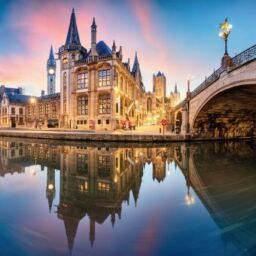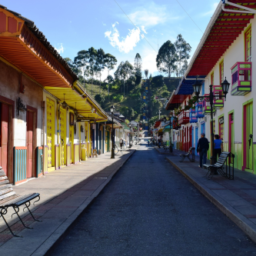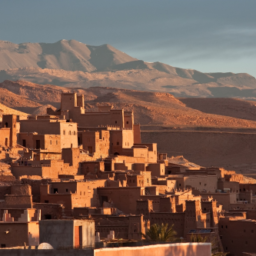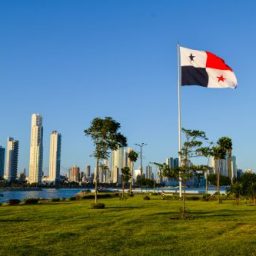

Chile is a country with a diverse climate, extreme natural phenomena, and excellent wines. Many people dream of visiting it, but before you plan a vacation on the west coast of South America, you should do some research and learn as much as you can about this part of the world.
In today’s article, we have prepared a handful of tips that will be useful to anyone who would like to go to Chile. What languages do its inhabitants speak? Which month is the best time to plan a trip? And what is worth seeing in Chile? Find it out for yourself!
Republic of Chile – essential information
The Republic of Chile is a country located on the coast of South America on the Pacific Ocean. It shares land borders with Argentina, Bolivia, and Peru. Chile also controls about 3,000 islands, including Juan Fernández, Easter Island, Sala y Gómez, San Ambrosio, and San Félix. The capital of Chile is Santiago. The area of Chile is 756,950 km², and the population is estimated at just over 18 million. Chile’s currency is the Chilean peso. The dominant religion is Roman Catholicism, followed by Protestantism and other branches of Christianity. Chile is a republic with a president elected by universal suffrage for a four-year term as head of state.
The geography of Chile
Chile occupies a narrow strip of land of 4.3 thousand kilometres along the southwestern coast of South America – 468 kilometres east to west at its widest point, and at its narrowest, only 90 kilometres east to west! This makes Chile the country with the longest shape of any country in the world.
The Republic of Chile is a mountainous country, with the Andes Mountains located on the eastern border across the entire territory from north to south. The highest peak is Ojos del Salado with a height of 6880 m. The longest river flowing through Chile is the Loa River, which is 440 kilometers long.
The climate of Chile
Due to its unique location, Chile has a very diverse climate. In the north of Chile, the climate is tropical arid to very dry, which in summer means heat during the day and high temperatures at night. Precipitation in the region is no more than 100 mm per year, and in the driest parts of the Atacama Desert, the last rain was noticed about 400 years ago.
Slightly to the south, the climate becomes subtropical, similar to the Mediterranean climate. Precipitation is much higher, and it rains and snows all year round in the mountains. The subtropical climate then transitions to temperate, with the occasional influence of air masses formed in the Antarctic Region.
The southernmost part of Chile is located in the subpolar climate zone, which is characterized by cold winters and cool summers, and due to the proximity of the West Winds Current, there is also often strong wind.
In most of the country, there are four seasons: summer (December to February), autumn (March to May), winter (June to August), and spring (September to November).
Languages of Chile
Although the vast majority of Chilean citizens speak Spanish, some communities still use other languages. Here’s everything you need to know about languages in Chile.
Chilean Spanish
Spanish is the national language of Chile and the native language of approximately 14 million people living in the country. The dialect of Spanish in Chile is similar to Andalusian Spanish, and it also contains a lot of chilenismos, i.e. phrases and expressions used only in Chile. An additional difficulty for foreigners coming to Chile is that Chileans speak very fast and often drop the final syllables.
Useful phrases in Spanish
Are you planning on going to Chile? Then you will undoubtedly need some basic Spanish words and phrases to help you feel more confident while exploring the country.
Sí – Yes
No – No
Tal vez – Maybe
Por favor – Please
Gracias – Thanks
Está bien – All right
Muchas gracias – Thank you very much
Disculpe – Excuse me
Lo sé – I know
No lo sé – I don’t know
Comprendo – I understand
No comprendo – I don’t understand
Perdón – Przepraszam
¿Hablas español? – Czy mówisz po hiszpańsku?
No hablo español – Nie mówię po hiszpańsku
¿Podría, por favor, repetir eso? – Could you repeat?
Hola – Hi
Buenos días – Good morning
Buenas tardes – Good afternoon
Buenas noches – Good evening
Adiós – Bye
Hasta la vista – Goodbye
Hasta pronto – See you soon
Hasta luego – See you later
Buenas noches – Goodnight
Que tenga un buen día! – Have a good day!
Tenga un buen fin de semana! – Have a good weekend!
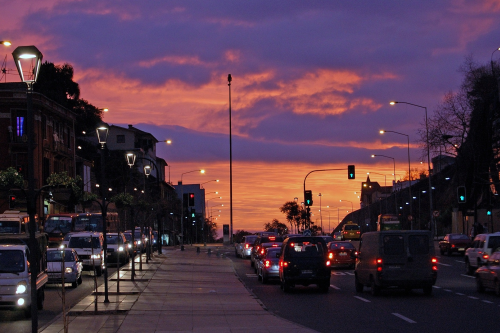
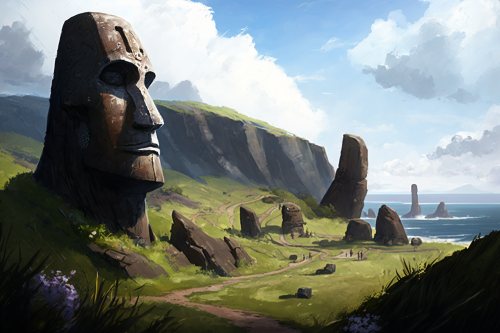

Indigenous languages of Chile
Under a 1993 law, the indigenous languages of Chile are officially recognized for use and conservation, and may be used by the communities, for example as names in the Civil Registry, in media promotion, and in artistic expression. Below we describe the indigenous languages of Chile, both spoken and extinct.
Mapudungun language
It is the language of the Mapuche ethnic group, inhabiting mainly the central part of Chile and western Argentina. Mapudungun belongs to the Araucan language family. It is estimated that there are around 260,000 native speakers. It had a major influence on the vocabulary of Chilean Spanish.
Aymara language
This language belongs to the Aymara language family and is spoken by the Aymara people that live mainly in the Andes on the border of Bolivia and Peru. It is estimated that Aymara is the native language of about 2.3 million people, of which about 20,000 live in Chile.
Chilean Quechua language
The Quechua language, the language of the Quechua people, is spoken in many countries of South America, and the number of its native speakers is up to 11 million. Chilean Quechua is identical to or very similar to South Bolivian Quechua. It is estimated that about 8.2 thousand native speakers of this language live in Chile.
Rapa Nui language
Rapa Nui is a language that belongs to the eastern branch of the Polynesian language family of Austronesian languages. It is spoken by a total of about 5,000 people, most of whom live on Easter Island.
Kavesqar language
An isolated language spoken by the Alacaluf Indians. There are currently only twelve speakers of the language, ten of whom live in Puerto Edén.
Yagan language
An isolated language of the Yagans who used to live in southern Tierra del Fuego. The last native speaker of Yagan died in 2022.
Tehuelche language
It belongs to the Chon language family. It was the native language of the Tehuelche people of Patagonia. Considered an extinct language since 2019.
Cacan language
It is the language spoken by the Diaguita and Kalchakí people of northern Argentina and Chile. Unfortunately, we have very limited information about it, but it is estimated that it has been extinct since the end of the 17th or the begging of the 18th century.
Kunza language
An isolated language spoken by the Atacameños people in northern Chile. The last user of the language was documented in 1949.
Other languages in Chile
In addition to Spanish and indigenous languages, in Chile we can also hear other languages spoken by members of immigrant communities. The largest of them is the community of people of German descent, a community estimated to be between 150,000 and 250,000 people, of which about 20,000 are speakers of the German language.
Chilean Sign Language
A type of sign language used in Chile by deaf people. According to data provided by the World Federation of the Deaf, approximately 293,000 hearing-impaired people are living in Chile, of which 66,500 are completely deaf. There is no precise information on the number of users of Chilean Sign Language, but it is estimated that it may be about 21,000 people.
English in Chile
Many people going on a trip to any country in the world assume in advance that English would be enough to communicate with its inhabitants. This is not always true, and Chile is one such case. According to statistics from a few years ago, we can only communicate in English with about 10% of Chileans. This means that we have a much better chance of getting things done if we know the basic Spanish vocabulary. Knowing English, on the other hand, is highly appreciated by Chilean employers, so if you are looking for a job in Chile, being an English speaker is going to work to your advantage.
Chile – useful information for travellers
Chile, compared to neighbouring countries, is distinguished by a low crime rate. However, all people travelling in the country should be careful in places such as metro stations, bus stations, popular cafés, and all places popular with tourists in major urban centres such as Santiago, Antofagasta, Viña del Mar, and Valparaiso.
Chile is a country prone to natural disasters such as earthquakes, tsunamis, forest fires, floods, and volcanic eruptions. The Chilean Ministry of the Interior and Public Security regularly updates information on the threats occurring in each region and their intensity on its official website.
Entry requirements
No visa is required for a trip to Chile for up to 90 days. A passport or a temporary passport with a minimum validity of six months is sufficient to enter the country. You cannot cross the border with only an ID card. Stays longer than 90 days require a visa. Appropriate visas are issued by the Department for Foreigners and Migration.
Healthcare in Chile
Chile does not require any certificate of vaccination from visitors, but it is recommended to get vaccinated against typhoid fever, diphtheria with tetanus, rabies, and hepatitis A and B before your trip. Hantavirus infection is also common in Chile, and to prevent it travellers are recommended to frequently air their rooms, store food in airtight containers and ensure cleanliness, especially kitchen countertops and floors.
Healthcare services are quite expensive in Chile, except in the case of an immediate life-threatening situation. Prices usually range from around 80-100$ for a doctor’s visit to as much as 400$ per day for staying in a hospital. Because of that, tourists are advised to make sure they have travel insurance.
Tourist attractions in Chile
Chile offers an extraordinary range of diverse attractions, among which everyone will find something for themselves. The vast majority of travellers will start their adventure in Chile from its capital, Santiago, because that is where the international airport is located. To be able to admire the city’s architecture, you should visit the Plaza de Armas and the Barrio París-Londres.
While in Chile, you shouldn’t miss out on the Atacama Desert region, where the famous Death Valley (Valle de la Muerte) and the Moon Valley (Valle de la Luna) are located. In addition, it is worth going to lake Laguna Altiplânicas or Laguna Cejar and visiting the Salar de Atacama salt flat. While exploring this part of Chile, you can find accommodation in the charming town of San Pedro de Atacama.
Enthusiasts of active recreation are also eager to go to the Torres del Paine National Park, located in the south of Chile. Hiking will lead you to two viewpoints, Mirador Britanico and Mirador Base de Las Torres, from which you can observe the massifs of the Torres del Paine mountains. In the national park, there is also the Gray Glacier, which can be observed from the boat during a lake cruise. The most persistent daredevils can also decide to go hiking on the glacier!
Of course, you can’t forget Easter Island, one of the most isolated inhabited islands in the world, which has fascinated and attracted travellers from all over the world for years. Everyone is surely familiar with its biggest attraction: as many as 900 monolithic Moai statues, the largest of which is almost 10 meters high and weighs 82 tons!
Learn Spanish with us!
We hope that you have found our article about Chile interesting. If a trip to Chile or another South American country is your dream, be sure to check out the offer of our Skrivanek language school. With us, you can learn Spanish in stationary classes in Warsaw and Lublin, or during an online course from anywhere in the world.
If you are interested in translation from or into Spanish, please contact our Skrivanek translation agency. We offer standard, specialist, and certified translations. Get in touch with us today!





